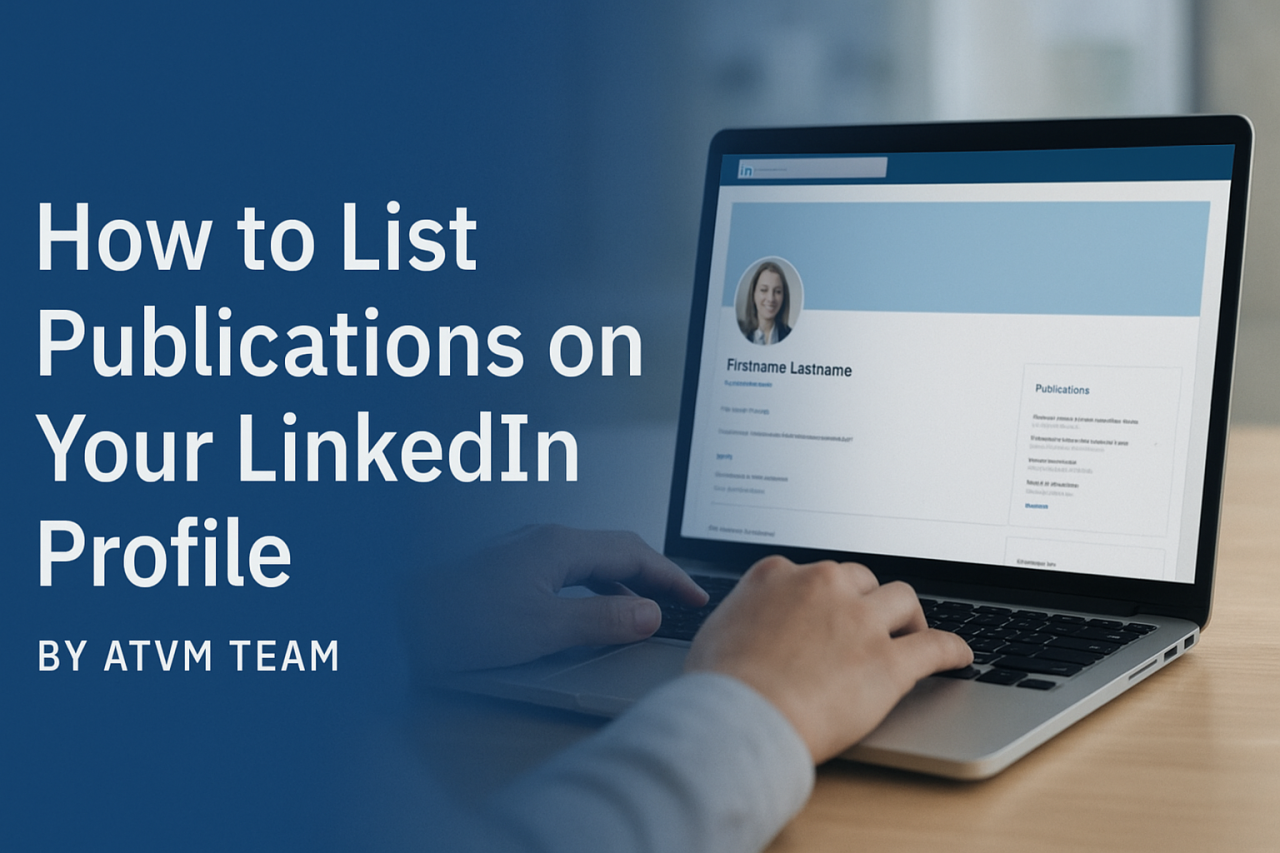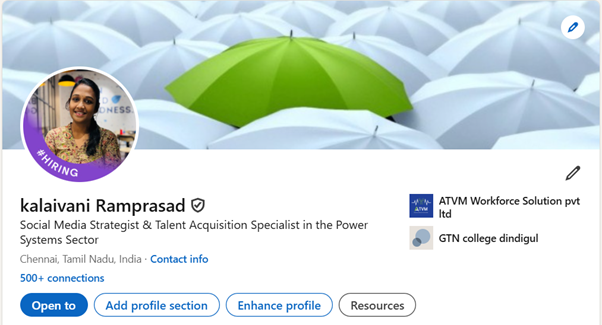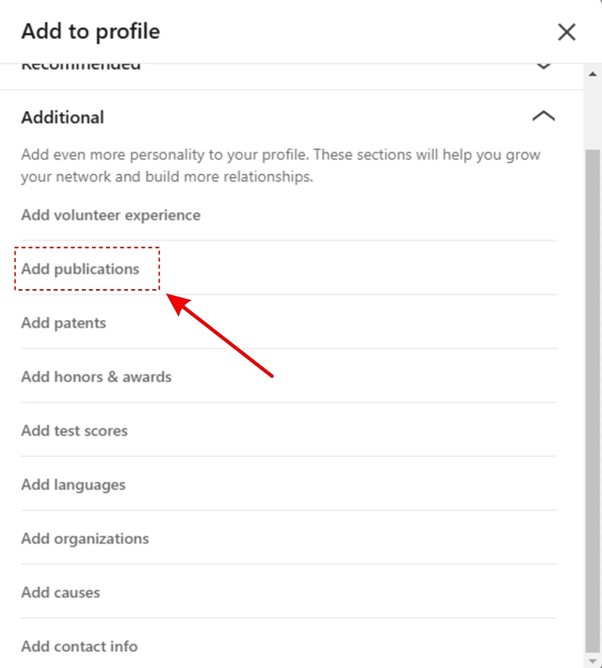How to List Publications on Your LinkedIn Profile by ATVM Team

Showcase your expertise by listing publications on your LinkedIn profile. Learn step-by-step how to boost credibility and attract recruiters.

Why You Should Add Publications
If you’ve written technical papers, blog posts, final-year projects, or industry articles—
you should list them.
Why?
Because recruiters check LinkedIn before calling you.
And your publications prove:
- You know your subject
- You can explain ideas clearly
- You’ve gone beyond just classes or job roles
If you leave this blank, they assume you haven’t done any.
How To Add Publications To Your LinkedIn Profile On Desktop
Step 1: Open Your LinkedIn Profile


- Click “Add profile section”
- Go to “Additional”
- Choose “Add Publications”
Step 2: Enter Details
Fill these fields carefully:
- Title: Name of the article or project
- Publisher: Journal, college, or platform
- Date: Month and year of publishing or submission
- URL: Add link (Google Drive, website, blog, journal, etc.)
- Description: Write a short summary
👉 Don't skip the description.
Tell what the work was, your role, and the result.
Example:
Published paper on Load Flow Analysis using ETAP. Presented at State-Level Electrical Conference. Focused on improving rural feeder performance.

Step 3: Click Save
Once saved, your publication is now visible to employers.
Don't Skip The Description!
This part grabs attention.
It tells:
- What your publication is about
- What you contributed
- What problem it solves
Even if your project is small, your clarity can impress.
Use 2-3 lines. Keep it simple and useful.
Prioritize Relevant Publications That Showcase Expertise
Don’t list everything.
Pick the ones that match your career direction:
- Final-year projects
- SCADA system reports
- Industrial training papers
- Design guides
- Electrical safety audits
- Technical blogs on power systems or design tools
Each one must prove your interest and knowledge in core electrical roles.
Use Industry-Specific Keywords For Better Visibility
Think of what recruiters search:
- “Power system protection”
- “Relay coordination”
- “ETAP modeling”
- “Substation automation”
- “Earthing calculation”
- “AutoCAD Electrical design”
Use these words naturally in your:
- Title
- Description
- URL (if possible)
But don’t repeat them just for the sake of it.
Regularly Update Your Publications Section
Each time you finish a:
- Mini project
- Industrial training
- Paper presentation
- Blog post
- Conference talk
Add it.
Even if it’s a short summary with a PDF or video link—it shows your progress.
Maximize Your Reach
- Add links: Journal link, blog URL, Google Drive, GitHub
- Tag co-authors: If you did it as a team
- Ask your co-authors to add the same publication on their LinkedIn
- Cross-tag each other—it increases visibility for everyone.
Example Format You Can Use
Title: Load Flow Optimization Using ETAP
Publisher: Tamil Nadu State Technical Symposium
Date: Jan 2024
Description:
Analyzed 11kV feeder performance using ETAP simulation. Improved voltage profile by 14%. Presented solution to reduce technical losses.
URL: [Add your Google Drive or blog link]
Why This Matters to You
Your publication = your proof of skill
In a sea of job seekers with similar degrees, your project or paper sets you apart.
It shows:
- You think deeper
- You take effort
- You know your tools
If You’re in Electrical Domain
Whether you are a fresher, student, or job seeker in:
- Power system analysis
- Testing and commissioning
- Electrical design
- Substation maintenance
Your LinkedIn must show what you’ve done, not just what you want.
Publications do that job.
Let ATVM Help You
We support you in:
- Profile writing
- Project showcasing
- Resume reviews
- LinkedIn audits
- Core job targeting
If you're confused, start small.
Just add one publication today.
Let your work speak.
We'll help you show it right.
Categories: : LinkedIn
 Kalaivani Ramprasad
Kalaivani Ramprasad 